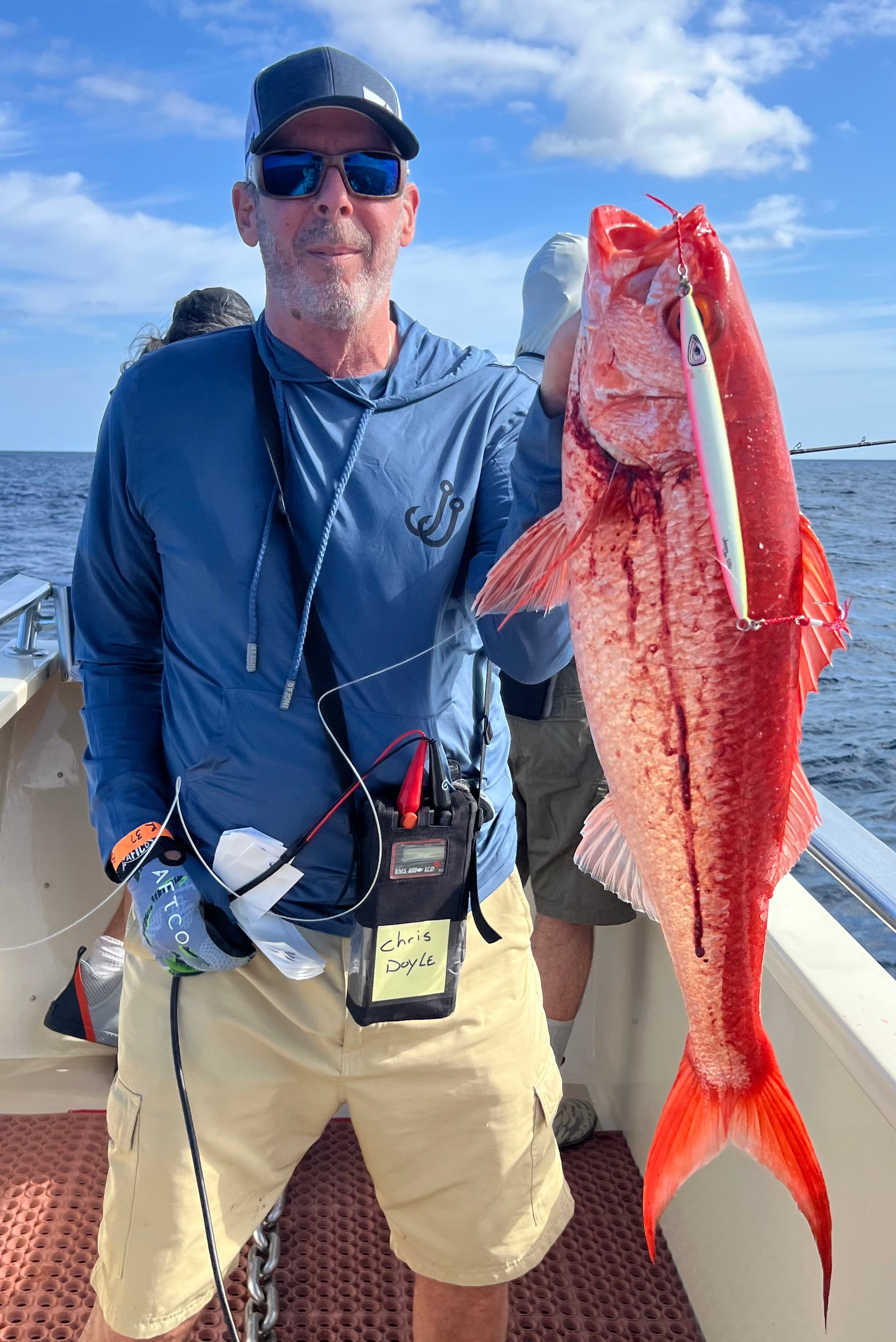Previously, we published on how to tell when it’s time to replace your fish hooks, and let’s get one thing straight: no matter how well you care for your hooks, if you have the jig long enough and catch enough fish on it, you will need to replace them eventually, even if the thing is rigged with high-quality Mustad or Gamakatsu hooks.
Still, that doesn’t mean you don’t want to pay attention to your jig’s hooks. Taking care of them will make them last longer and could potentially mean fewer lost fish due to a poor set or to hook fatigue.
That said, here are some tips for how to make sure your hooks stay in fish-catching-shape for longer.
Keep Them Sharp
First and foremost, keep your hooks sharp. The points of your fish hooks are the most important part and these can easily be dulled and blunted by incidental contact with hard surfaces, including the body of the jig (more on that in a minute).
So, keep a hook hone in your tackle box or bag and give each point a few passes before you drop the thing over. A quick way to check if your hooks are sharp enough is to place the point off a hook lightly on your thumbnail, then try to move it.
If the point “bites” your nail, we fishermen call this “sticky” sharp - and it is sharp enough. If the test fails, touch up the hook point on your hone and get back to fishing.
Keep Them Straight

After a brutal fight, some of your hooks might get bent a bit. You want to make sure before you drop that jig again that, number one, the hook is in good enough shape to do so, and that two, you’ve rectified any minor bends that throw the point off of its intended alignment.
Any hooks that have been badly bent should be removed, discarded, and replaced. Even top-tier hooks like Mustads and Gamakatsu hooks should be replaced at this point. They’re heat-treated and stress-relieved so as to resist bending; when they bend once, there is a good chance they’ll break on the next go-around.
But, a minor bend is not a big deal. Just get out your pliers and twist the thing back into shape and you should be good to go.
Keep the Hook Point Protected
Incidental contact with a hard surface can and will damage the points of your hooks, especially if you keep them as sharp as we have recommended in this article. It doesn’t take much to turn the point of a sticky-sharp hook.
Therefore, it’s best to keep your hooks well protected. If you store your jigs in a tackle box, try to keep each one in its own dedicated slot or tray. If you use a tackle bag or some other kind of organizer, afford each jig its own slot as well to minimize contact between the hook point and anything else. Following this maxim will offer the added benefit that you won’t have to deal with a load of tangled jigs when you go into your box or bag to pull one out.
Another thing you can do is add dedicated hook protectors to each jig. There are special plastic sleeves you can buy, as well as lure wraps (although you can also improvise your own) that will shield your hook points, not only preventing them from getting dull prematurely, but also helping to prevent those less-than-pleasant lure tangles.
Rinse and Dry Thoroughly Before Storing
Many lure bodies are made of lead and actually aren’t too prone to corrosion, but your hooks? They’re made of steel, and even high-quality, plated VMC and Gamakatsu hooks will rust if you give them the chance, especially after an exposure to saltwater.
After every trip on the water, get the jigs you used together and rinse them off thoroughly, then dry them completely before you even think about putting them away. A best bet is to lay them out in the sun and turn them over once or twice to ensure they’re fully dry before you put them away.
Make sure you never put them back in your bag or box while still wet, because if you do, even if you take them out later and rinse them, there will be lingering saltwater in the box or bag which will rust your other lures and hooks.
Pro Tip for Preventing Rust

Lastly, there are things you can do to prevent the noxious terror of rust from creeping into your tackle box, bag or other depot and laying waste to your precious (and expensive) slow pitch jigs and hooks.
There are commercial tabs and moisture absorbers that you can place in your tackle boxes to absorb excess moisture and prevent rust, especially for prolonged storage, such as during the winter when you’ll spend less (or no) time on the water and your tackle will be put away.
But there are also improvised moisture absorbers you can use, like cotton puffs, charcoal, or even grains of raw rice. A few pieces of charcoal or grains or rice in the bottom of your tackle box can absorb an enormous amount of moisture and while they won’t be entirely effective at completely preventing rust, they can go a long way towards inhibiting it from developing.
Stock Up on Slow Pitch Jigs and Gamakatsu Hooks
Here to restock your tackle bags with slow pitch jigs, or do you need some quality hooks to replace some old and aging hooks on your current jigs? In either case, we have you covered with a wide range of quality Gamakatsu, Mustad, BKK, Vanfook and assist hooks.
Take a look through our full collection of hooks and tackle and get in touch with us if you have any questions or need recommendations, and make sure you bookmark our blog as well as our official YouTube Channel, JohnnyJigsTV, so you never miss out on news or other developments.

